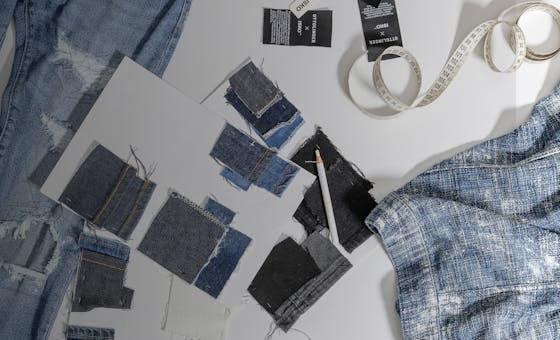Redesigning the design process for (almost) zero waste
Ever thought about where clothing comes from and what goes into making it? Even today, with the help of highly efficient machinery, the textile production process is no simple feat.
Historically, a person would have to plant and harvest a crop or gather fibres from an animal. They would then clean, comb, spin, and dye the fibres before threading them onto a loom. After many days of hand-weaving, the fabric could be removed to create a garment.
The first cut into that piece of cloth — which by now has taken months of effort to produce — might have been a slightly nerve-wracking experience. And every part of the cloth would surely be put to good use.
Nowadays, textile production requires all the same steps, but thanks to high-speed industrial machinery, a lot more fabric can be made much quicker. Fabrics are produced at incredible speeds, pattern pieces are cut out of the fabric, and the leftover scraps are usually discarded— hopefully for recycling.
Inundated with an overabundance of material and clothing, throwing out leftover pieces of fabric may seem harmless. But these days, we know better. Small amounts of textile waste can add up to major negative impacts on our environment.
“Waste reduction has always been a cost concern, not one of sustainability. Usually 85%–90% of the fabric is used,” says Creative Room Italia’s Massimo Munari. Thinking about cost efficiency, paper patterns are created to waste as little fabric as possible, but 10%–15% can still end up in landfill.
But what if we adopted the attitude of our ancestors? What if we ensured that every possible part of that precious, high-quality, durable, and sustainably made textile would be used in our garment?
ISKO’s Creative Room Italia posed this question and researched a variety of solutions through design exploration trials. With sustainability in mind, the team explored how iconic garment designs could accommodate small tweaks in the patterns and how leftover parts of the cloth could be used for details in the clothing, such as reinforced elbows or patch designs. “Even the selvedge of the fabric was used to attach the hangtag to the garment,” Massimo says.
The result? All garments in the Rad Rags | Zero Waste capsule collection use more than 98% of the fabric — some pieces use 99.7%, which is usually impossible. And thanks to RE&UP, ISKO’s new venture in textile recycling technologies: yes, the remaining 0.3%–2% of remaining material will be recycled.
But Massimo admits that the material-saving design process is not easy. Designers are not usually experts in patternmaking. This approach requires the design and engineering teams to work together. Each design requires creative thinking, and size adjustments affect how the pattern pieces are placed.
The Rad Rags | Zero Waste capsule collection was also particularly challenging for the team because they began with iconic denim designs, such as the “trucker” jacket, and worked to preserve the designs’ integrity. Beginning with a completely new design could have been somewhat less restrictive. But restrictions can also lead to innovation. “Forcing the patterns to change also created new discoveries in the shape and fit.”
In addition to this material-saving approach, all the fabrics in the collection use ISKO’s Ctrl+Z fabric technology. These fabrics are made from recycled cotton and polyester with regenerated cellulosic fibres. The wash processes also minimize water-use and utilize non-hazardous techniques.
With the Rad Rags | Zero Waste collection, Creative Room Italia hopes to inspire brands to think differently and focus on less waste. Brands can adopt the process or think of other ways to approach the same challenge. According to Massimo, it’s not easy, but it is possible. “We sent a message to the world that there is another way to work on design.”
THANK YOU
Thanks for signing up to the ISKO™ newsletter. To start receiving the latest news and stories, please check your inbox for a confirmation email.

